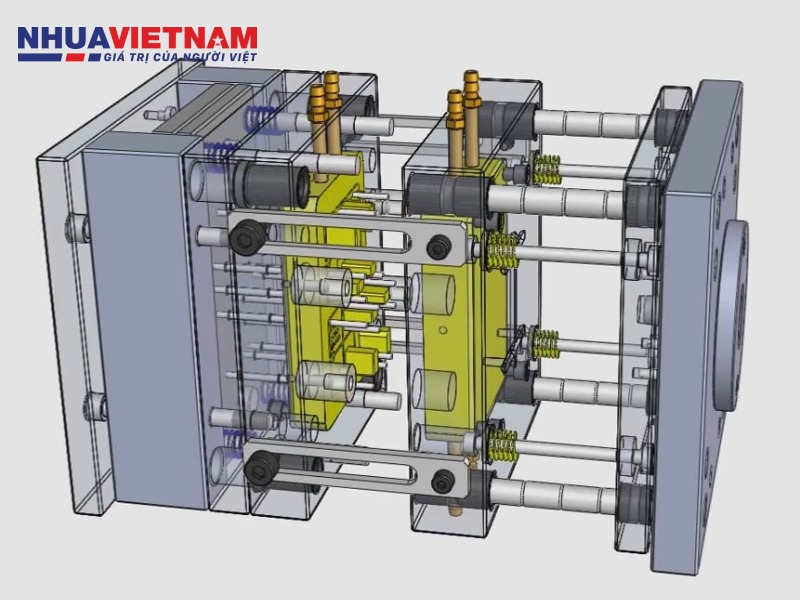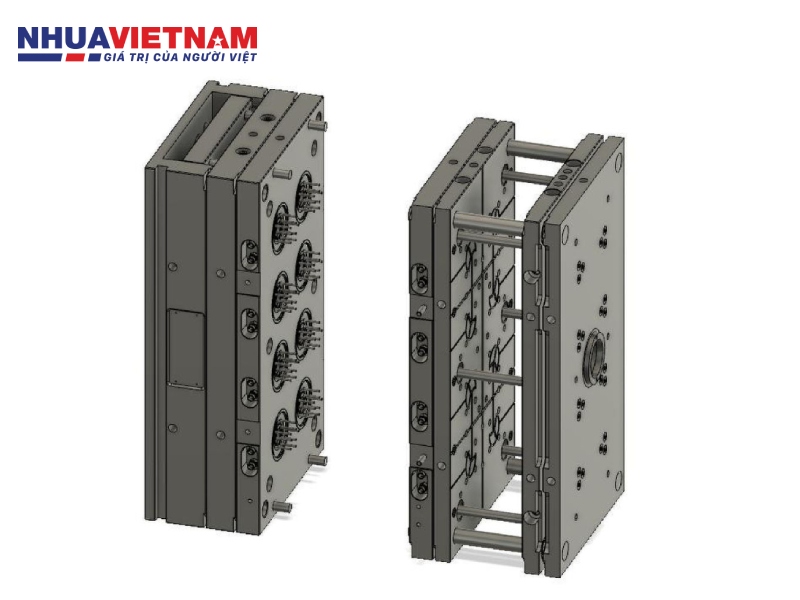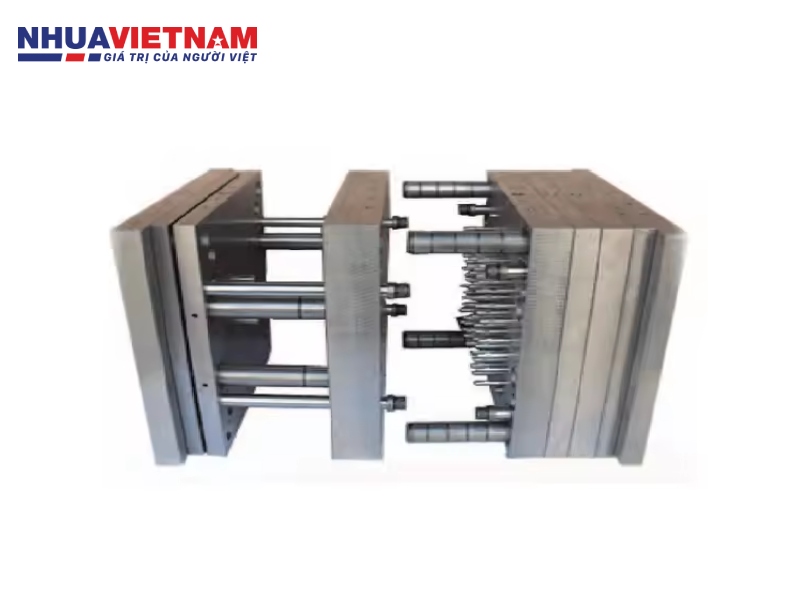In modern engineering plastics production, efficiency and precision are no longer determined solely by the injection machines or raw materials—but by the mold design itself. For parts that demand multiple gates, high surface quality, and automated extraction cycles, three-plate mold are rapidly becoming the new technical standard, replacing conventional two-plate molds.
What is a three-plate mold?
3-plate injection mold is widely used for complex plastic components. Unlike traditional two-plate molds, it includes an additional runner plate that separates the sprue from the finished part, improving product appearance and enhancing automation. This mold type is especially suitable for consumer goods, electronics, automotive components, and high-precision parts.

Three-plate injection molds are especially well-suited for products with complex designs.
Structure of a three-plate mold
A standard three-plate mold consists of three core parts: the cavity plate (fixed), the core plate (moving), and the runner plate (intermediate). This setup allows flexible gate positioning, helping molten plastic fill cavities more effectively through an advanced runner-gate system.
Once cooled and shaped, the intermediate plate opens first to remove the sprue, followed by the core plate to eject the final product. This sequence boosts precision, minimizes defects, and supports robotic extraction in automated lines.
Advantages of three-plate molds
Three-plate molds offer superior aesthetics by isolating the sprue, leaving no marks on the product surface. They also streamline post-processing through automatic runner separation, saving time and labor. This mold design accommodates multi-cavity and multi-gate configurations, optimizing cycle time and boosting productivity.

Three-plate injection molds also offer high operational efficiency.
How does it work?
The injection cycle involves four key stages: mold closing, material injection, cooling, and part ejection. After the mold closes, molten plastic is injected through the runner system to fill the cavities.
Once cooled, the mold opens in a controlled sequence: the runner plate releases the sprue first, then the core plate ejects the part—ensuring accuracy, speed, and minimal error.
Cost factors in three-plate mold manufacturing
The cost of a three-plate mold depends on several technical and operational factors.
First is mold material, which impacts durability, heat resistance, and cycle life. Common steel types include P20 (affordable, moderate hardness), H13 (heat-resistant), and S136 (corrosion-resistant, high gloss)—each priced differently.
Next is product complexity: the more intricate the design, the higher the machining time and cost. Multi-cavity molds require more material and fine-tuning but offer better output.

The cost of manufacturing a three-plate injection mold depends on various technical and operational factors.
Moreover, designing the runner, gate, and sprue removal systems for sequential opening demands higher engineering precision than two-plate molds. Advanced machining methods like 5-axis CNC, EDM, and wire cutting also increase cost, especially for high-gloss or tight-tolerance components.
Lastly, mold testing and post-machining adjustments—though often underestimated—are critical to achieve stable, mass-producible molds. Businesses should understand each cost driver clearly when reviewing mold quotations to balance performance and investment.
When should you choose a three-plate mold?
Not every product needs a three-plate mold. However, when your goal is faster cycles, cleaner surfaces, or integration with robotic automation, this mold type is essential. It's particularly beneficial for electronics, precision plastics, medical devices, or exports to high-standard markets like the U.S., Japan, or Europe—where reducing defect rates and increasing competitiveness are crucial.
Nhua Viet Nam – High-Precision Mold Manufacturing Partner
Nhua Viet Nam offers full-cycle support from mold design consultation three-plate mold, core material selection, to machining, testing, and sample delivery. Backed by skilled engineers and advanced CNC–EDM systems, we handle orders up to 5 million units with ISO-standard quality and delivery commitments.
Conclusion
If you’re looking for a reliable partner for high-precision three-plate mold production with strong technical support and on-time delivery, Nhua Viet Nam is your trusted choice. We understand that each mold is not just a tool—but the foundation of stable production and long-term profitability. Leave your contact information, and our technical team will get in touch with tailored solutions for your needs.
Contact Information
- Hotline: +84 886 723 131
- Email: info@vnplastic.vn
- Địa chỉ: Số 56 đường 455, Tổ 4, Ấp Hội Thạnh, Xã Bình Mỹ, TP.HCM




